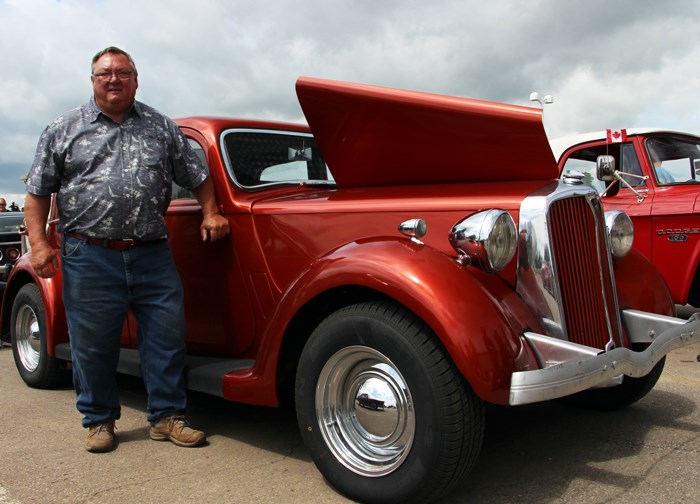It’s rare that someone has the chance to see a Rover P3.
Just under ten thousand were made total, but very few were made in left hand drive, fewer still survived into the modern era.
Bob Bartch of Sturgis, Sk. says he knows of three, and he has one of them, a 1949 model which he brought to the Painted Hand Casino Show and Shine.
Bartch first bought the car in 1969 in Vancouver from his uncle. He bought it with a hunting rifle and three hundred dollars, which was all that he had.
“I fell in love with it... I left Vancouver with $35 in my pocket, a bag of egg salad sandwiches that my aunt made and two cans of gas in the trunk. I made it to Moose Jaw before I was broke... It took four days to get through the mountains, it would overheat.”
He’s had to build it three times, the third coming after the car had left him for 20 years and he found it again as a wreck in Lipton.
Bringing it back to life took five years, though Bartch admits that there’s still work he wants to do.
“You’re never done... It’s a passion, it’s all I can say.”
Finding parts for a rare car is never easy, especially once it has been out of production for over 60 years.
Bartch has approached this problem with ingenuity, finding unexpected ways to make the car work.
General Motors makes up the majority of the replacement parts, including the entire drivetrain which includes a 327 V8, but the steering is from a Dodge Dakota, the seat upholstery and taillight lenses are from a Mercury Topaz, and some trim pieces aren’t from cars at all.
“The grille was smashed up, so I made a new one out of old TV antennas. They were aluminum so I welded them in.”
Bartch did his own bodywork, including widening the fenders so it could accommodate the new running gear. When it comes to making his own parts, he says it’s just necessary since there’s so little original left from Rovers in the era.
Many parts can’t be found, so then you have to improvise, even if that means carving your own door trim or making your own turn signal lenses.
Parts also disintegrate after a while, making restoration impossible.
“I had the clock, but it was wrecked. I took it apart to see if I could just get the face redone, and it just came apart in my hands.”
It’s Bartch’s first time at the Yorkton Show and Shine, as he mostly keeps around the Sturgis area. However, he was told about the event from someone he met while fishing in northern Manitoba, and says he’s impressed by what he saw in the community, and the range of what people brought out to the event.




